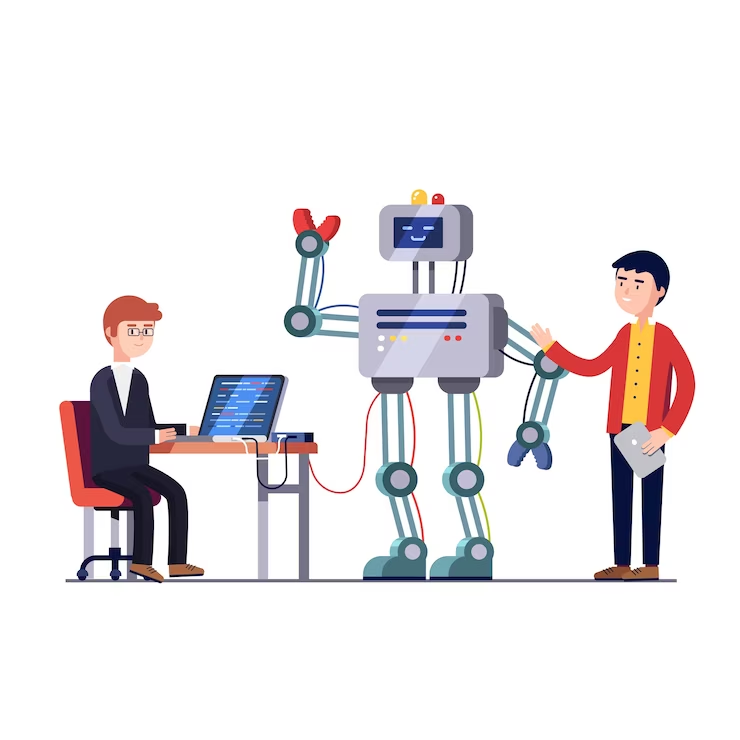
Aug 11, 2023
Physicians are spending a significant portion of their time, ranging from 1.5 to 4 hours per working day, on electronic health record (EHR) software to create clinical documentation. This extensive usage of EHRs leads to overwork, decreased productivity, and burnout among physicians. This issue has been validated by the Mayo Foundation for Medical Education and Research, which confirms the association between perceived EHR usability and professional burnout among US physicians. According to their research published in Mayo Clinic Proceedings, contemporary EHRs receive a significantly poorer usability rating compared to most other technologies, indicating a need for improvement. Enhancing EHR usability has been suggested as a potential strategy for reducing healthcare burnout.
To alleviate the burden of electronic documentation on clinicians, clinical scribes have been introduced, particularly in North America. Scribes are trained to work alongside clinicians, translating information from clinical encounters into accurate and meaningful records, allowing clinicians to focus more on the clinical aspects of patient consultations. The presence of scribes in a healthcare team has shown benefits such as improved revenue, patient/provider satisfaction, and patient throughput.
There are three primary methods for implementing medical scribing - physical medical scribes, virtual medical scribes, and technology-led documentation. Let's experiment the advantage and disadvantages of each option.
1.Live Medical Scribing with Full Human Assistance
Physical medical scribes are physician assistants who accompany doctors during patient visits and record relevant information in EHRs. They have knowledge of medical terminology and write in a manner similar to doctors, ensuring accuracy while documenting. Medical scribes electronically capture all information, making it accessible to doctors for review. The work of medical scribes is supervised by managers, often nurses or quality assurance specialists. By handling clerical responsibilities and documenting every occurrence and treatment, medical scribes enable doctors to focus more on their patients. However, challenges associated with physical scribing include high turnover rates among scribes, training and onboarding costs, and inefficiencies in the services provided by medical scribe companies. The average cost of a physical scribe can exceed $3000.
2.Virtual Medical Scribing with Partial Technology Support
Virtual medical scribing involves remotely recruiting medical scribes, often from countries like India, who interact with doctors through video or audio chats. These scribes are typically hired through agencies or directly by companies responsible for ensuring compliance and facilitating secure interactions. Virtual scribes are less expensive, with an average cost of $16 per hour. However, there are additional costs for audio conferencing services and remote login software licenses. Some services offer a hybrid approach, combining technology and human engagement, with reduced fees of around $12. Disadvantages of virtual scribing include cost, availability, turnover, a learning curve, and the potential for human errors in the process.
3.Medical Scribing by Robots
The third option is the use of fully automated digital scribes, where the documentation process is primarily driven by computer systems. Human involvement is limited to resolving specific ambiguities in the therapeutic encounter, such as clarifying goals and requesting missing information. Automation, AI, machine learning, cognitive science, and robotic process automation are key technologies used in these systems. The entire documenting process can be entrusted to automation for well-defined encounters, such as routine clinic visits, with humans only called in when deviations occur. Such systems have high-quality automatic speech recognition and medical natural language processing, enabling speech-driven interactions. The cost for these systems can range from $500 to $750 per month, available 24/7 with no limitations on the number of patients or hours. Some of the drawbacks are lack of accuracy, completeness, relevance and medical synthesis.
When considering the implementation of any new system or practice, including medical scribes, it is crucial to address and manage the associated challenges. These challenges include the need for non-physician providers in the role of scribes, potential impact on patient honesty and information sharing, redefining workflows and responsibilities, provider verification of scribed documentation, the risk of documentation errors, overlooking accuracy during authentication, revenue generation, reliance on scribes, and system navigation without scribes.
In conclusion, medical scribes, whether in physical or virtual form, or through the use of digital technology, offer potential solutions to address the burden of clinical documentation on healthcare providers. Each option has its benefits and drawbacks, considering factors such as cost, workflow challenges, and the potential for human error. Careful evaluation and consideration are necessary to determine the most suitable approach for individual healthcare settings.
If you are a healthcare practitioner looking to ease the administrative burden of EHRs, Scribe4Me offers both live and offline medical scribing service with full human assistance as well as the hybrid approach, combining technology and human scribes. To learn more about our services call us today at (908)736-4180.

Please fill out this form.
We will reach out to you within 24 hours

Thomas Kennedy

Thomas Kennedy

Documentation is an important daily clinical responsibility. In order to optimize patient care, physicians are always on the lookout for new ways to effectively and efficiently document patient visits.
The use of virtual medical scribes has become increasingly popular in the recent years, as medical practices across the country are on the constant lookout for ways to reduce clinical documentation overload, thereby improving overall productivity.
The clerical burden associated with EHR usage is attributed as the number one cause of physician burnout. We also know that physicians spend twice as much time on EHRs and other clerical tasks compared to the time providing patient care.